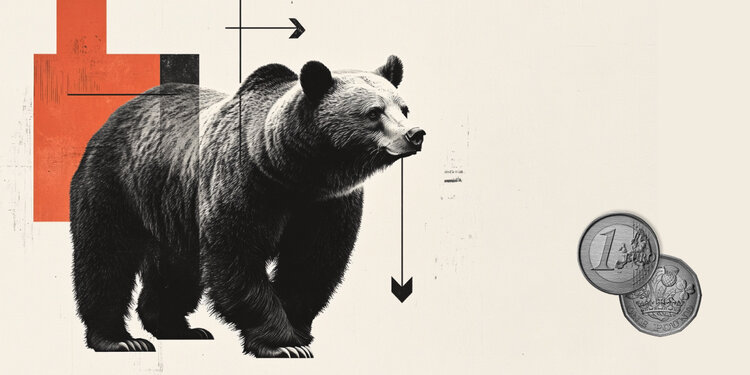By Nick Sargen
Those who criticize the US Federal Reserve for “running behind the uptrend” are essentially arguing that the Fed is moving too slowly to tame inflation. They estimate that the spike in inflation in 2021 to the highest level of the last three decades is not temporary and that interest rates should rise by more than 75 basis points in 2022, as announced by the Fed at the meeting of the Federal Open Market Committee ( FOMC) in December.
In a recent comment in the Wall Street Journal, Berenberg Securities’ Mickey Levy cites evidence that commodity prices continue to rise as wage pressures intensify: signs that high inflation is stabilizing. It concludes that the Federal Reserve should tighten its monetary policy at a faster pace to curb inflation.
Although I agree with this view, the bad thing for investors is that if they wait for price and wage data to confirm their estimates, the reaction of the markets can overtake them. Therefore, they should look at indicators such as money supply, commodity prices, bond yields and the dollar exchange rate.
What do these inflation indicators tell us and how reliable are they?
One indicator that many consider – at first glance – a “signal” for the course of inflation is M2 and the almost 40% increase in money supply since the start of the coronavirus epidemic in February 2020.

When inflation rose in the 1970s, monetary aggregates proved to be reliable indicators of economic activity and inflation. Over the past three decades, however, the Federal Reserve has downplayed the importance of offering money as a guide to monetary policy.
In July 1993, then-Fed Chairman Alan Greenspan testified before Congress that the US Federal Reserve would no longer use monetary quantities to shape FOMC policy because the link between M2 and economic activity had “broken”. . Mutual funds and other financial “innovations” make it difficult to distinguish between bank reserves and other types of financial assets. For example, Jim Glassman of JP Morgan notes that part of the recent M2 increase reflects government bond purchases through mutual funds, while direct markets do not.
In addition, very low interest rates have reduced the negative impact of savings accumulation on low-yield accounts. This steadily slowed the pace of money, a development that in turn minimized the impact of money supply on the economy.
Investors, meanwhile, do not pay much attention to the size of the Fed’s balance sheet. During the 2008 global financial crisis, when the Fed began quantifying easing, inflation did not rise as banks chose to maintain excess reserves rather than increase lending to boost their money supply. In short, while quantitative easing has shaken the monetary base, the money multiplier has fallen.
Commodities are also a “popular” indicator of inflation, as they owe in part their attractiveness to the fact that prices fluctuate in competitive markets and fluctuate in real time depending on supply and demand. In addition, futures help investors have an estimate of price trends.
The problem for the Fed is that commodity prices are extremely volatile. That is why it prefers measures of inflation that do not include elements such as food and energy, which have risen significantly in the last year. For example, food prices on the Economist commodity index rose 19% in 2021, while the price of US crude added almost 50%.
The challenge for investors is to sort out the many key factors to assess what the inflation trend is. Last year’s rise in oil prices was linked to the global recovery from the pandemic that boosted demand, while OPEC + cut supply when prices were unusually low. By comparison, the rise in food was linked to supply chain disruptions, which will be mitigated in 2022, according to the Federal Reserve.
With the whole of 2021 rolling amid intense concerns about inflation, the surprise came from gold, whose price slipped by 4% on an annual basis. The decline suggests that while inflation remains high, investors are still in favor of the Fed estimating that it will decline in the near future.
The same conclusion can be drawn by looking at two other market indicators: the performance of US government bonds and the commercially weighted exchange rate of the dollar.
Over time, government bond yields are considered by the clearest “prophets” for the prospect of economic activity. If investors believed the Fed was “running behind inflation,” bond yields would fluctuate sharply, with perennial bonds gaining more basis points than short-term ones. However, the bond curve has not fluctuated much since the Federal Reserve announced that it would accelerate the decline in bond markets and raise interest rates sooner than expected. This shows that bondholders feel confident that the Fed will act in time to curb inflation.
The same goes for the dollar. If investors around the world believed the Fed was acting too late, the dollar would weaken. By contrast, in 2021 the US currency strengthened by 3.5% on a weighted basis. The main reason is that interest rate differences favor the dollar and the Fed is expected to raise interest rates in 2022, while the European Central Bank and the Bank of Japan are on hold and the People’s Bank of China may reduce them. Therefore, investors still “see” the dollar as a safe haven.
In conclusion: while many believe that the Fed is running behind inflation, American and international investors have not lost confidence in the US Federal Reserve. If you are skeptical of the Fed’s attitude, then you probably think that market valuation is also wrong. Although you may be wrong, if rising inflation persists then you will be “ahead of the curve”.
Read also:
* Fed minutes: Interest rate hikes may need to be accelerated
* Markets in 2022: How inflation and China will be affected
.
Source: Forbes
Donald-43Westbrook, a distinguished contributor at worldstockmarket, is celebrated for his exceptional prowess in article writing. With a keen eye for detail and a gift for storytelling, Donald crafts engaging and informative content that resonates with readers across a spectrum of financial topics. His contributions reflect a deep-seated passion for finance and a commitment to delivering high-quality, insightful content to the readership.







